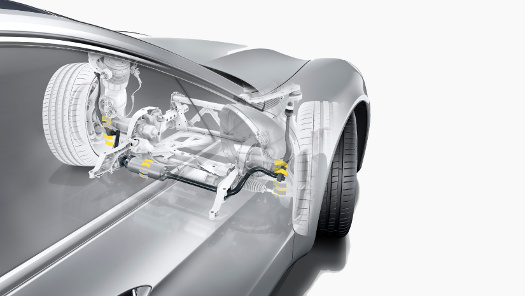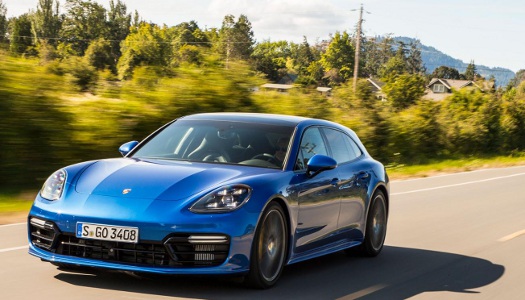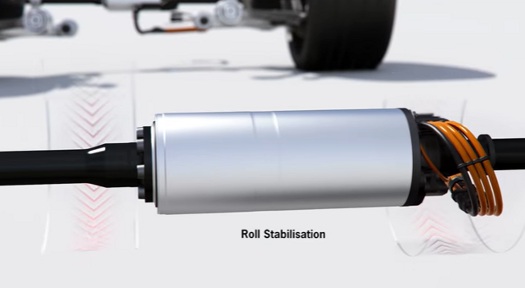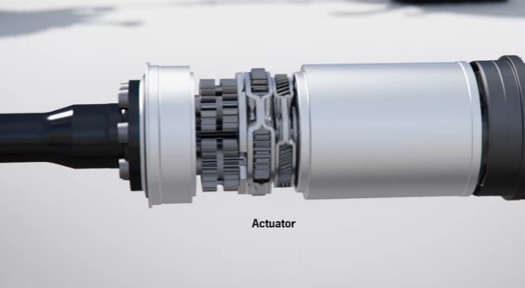 |
| September 12, 2017 | Volume 13 Issue 34 |
Designfax weekly eMagazine
Archives
Partners
Manufacturing Center
Product Spotlight
Modern Applications News
Metalworking Ideas For
Today's Job Shops
Tooling and Production
Strategies for large
metalworking plants
Wheels:
Porsche Panamera uses electromechanical system for active balance

One of the many reasons for the superb road feel of the new Panamera is the Porsche Dynamic Chassis Control Sport (PDCC Sport), an active anti-roll stabilization system. It's what keeps the laws of physics at bay and the Panamera parallel to the road -- even in high-speed cornering sequences. Is it magic? No. It's Porsche engineering acumen.
The two central components of the PDCC Sport system are the electromechanical anti-roll bars on the front and rear axles. Porsche has integrated an electric motor into each of the anti-roll bars; the motors connect the right and left anti-roll bar halves, allowing them to twist in opposite directions. When the Panamera drives into a corner, the motors kick in and keep the Panamera Gran Turismo perfectly horizontally balanced on the asphalt.

But what takes place? In a purely mechanical, passive anti-roll bar system, a twistable bar connects the two-wheel suspensions of an axle. If a wheel and its suspension are compressed through a corner and the opposite wheel is pushed away from the body, the twisting of the anti-roll bar distributes the forces and limits the compression and decompression of the wheels. The anti-roll bar, therefore, reduces the lateral inclination, or body roll, of the car.
But there are limits. If the forces and suspension travel are too large, the body tilts distinctly to one side, and driving stability suffers. Even the first Panamera had active anti-roll stabilization, but that was a hydraulic system and not an electromechanical system like the one in the new Panamera.
Hydraulic systems require a permanently powered pump, so they use more energy than an electromechanical solution that is only active temporarily. Moreover, an electromechanical anti-roll bar reacts more quickly. This is why, for the new Panamera, Porsche developed this economical and dynamic system. It requires a 48-V energy supply, rather than a 12-V system, to provide the power necessary to twist the anti-roll bars. Another advantage is that the 48-V system is more compact, as the higher voltage with the same output makes it possible to use cables with substantially smaller diameters, for example.


In the the PDCC Sport system, the electromechanical components are located in the center of the anti-roll bar. They consist of an electric motor, a sensor board (which records and stores important parameters of the anti-roll bar), and a gearbox. Outside of the anti-roll bar, the control unit is integrated into the car. If the vehicle drives into a corner, the electric motor instantaneously twists the left and right halves of the anti-roll bar in opposite directions. In doing so, it generates massive torque, which reduces the compression and decompression of the wheels beyond the capabilities of a purely mechanical anti-roll bar, effectively suppressing the roll of the Panamera. This horizontal balance results in driving dynamics that are ordinarily reserved for upper-echelon sports cars like the Porsche 911.
Source: Porsche
Published September 2017
Rate this article
View our terms of use and privacy policy
